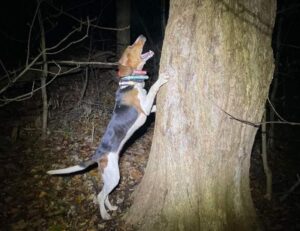
Coonhound Nite Hunts, Bench Shows, Field Trials & Water Races
Read and learn about the various coonhound performance events, such as Nite Hunts, Bench Shows, Field Trials, and Water Races.
Home » Meet The Breeds » Treeing Walker Coonhound
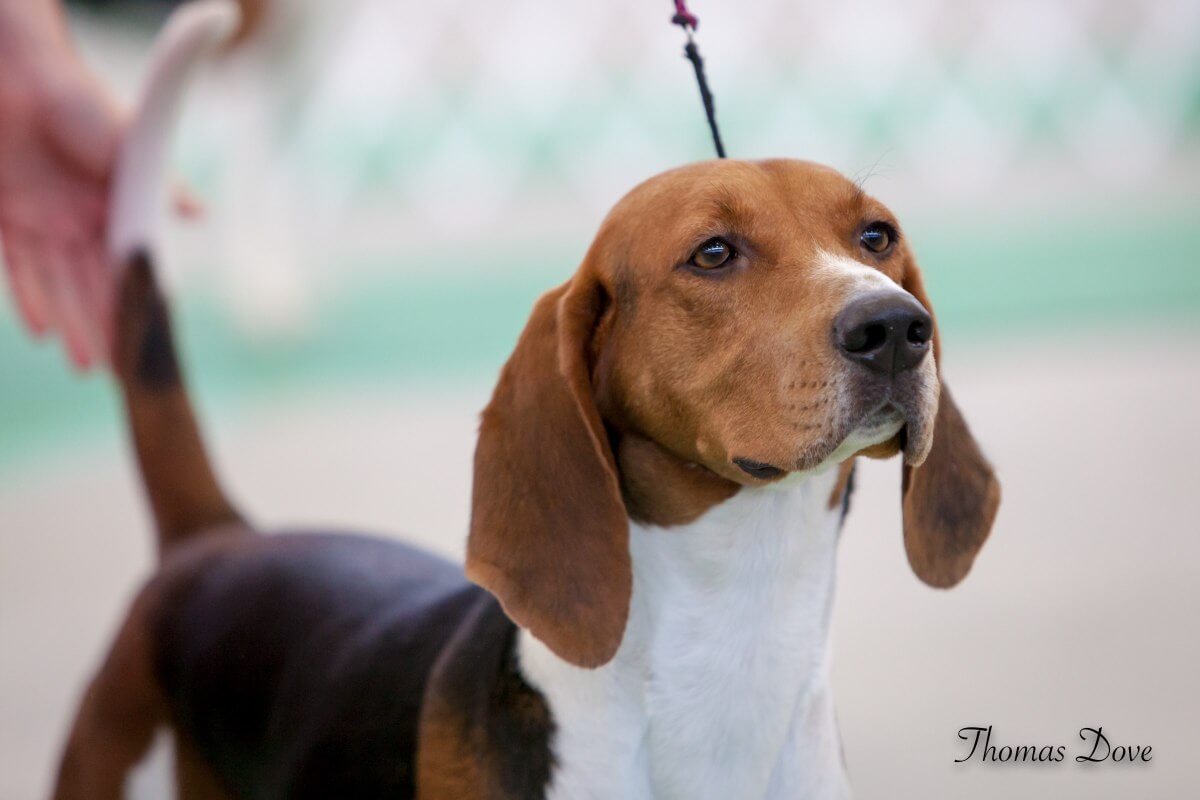
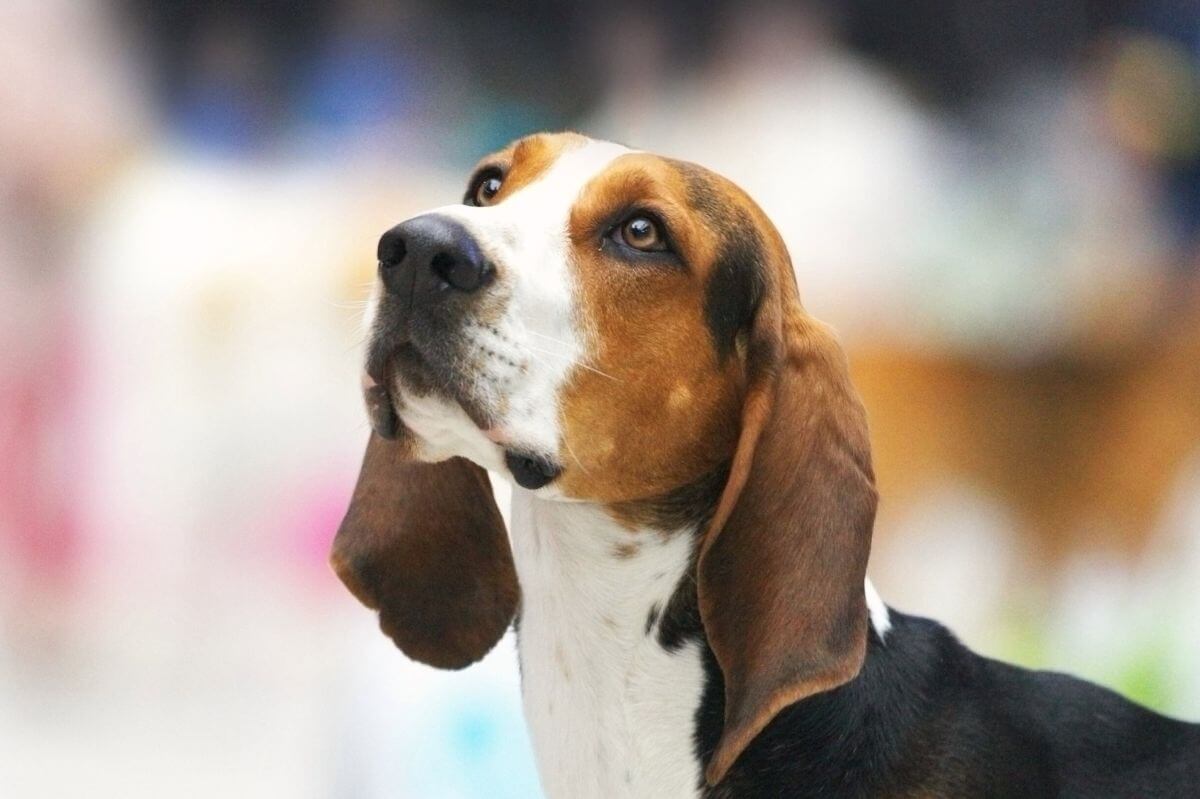

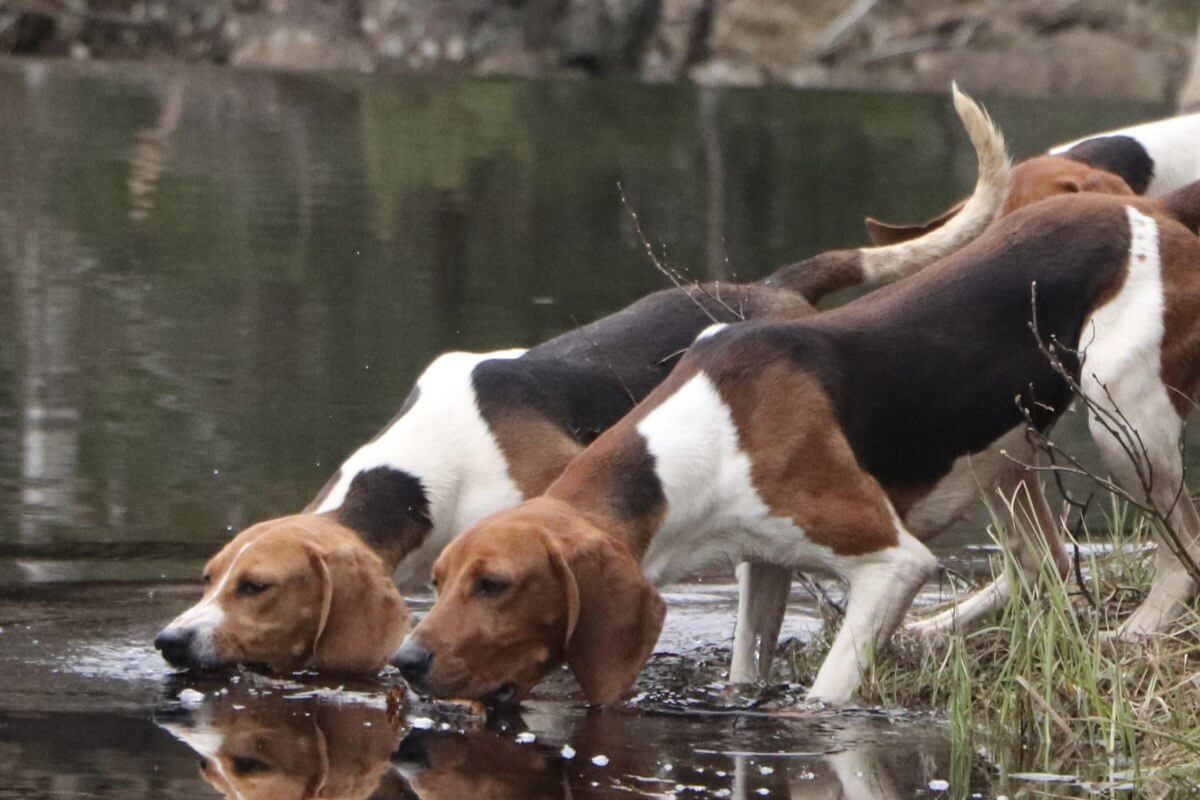
The Treeing Walker Coonhound is one of six American breeds of coonhound. This tri-colored hound is widely considered “the people’s choice” and is well-known for its exceptional tracking ability. This energetic hunter was the first of its kind to be used to track and tree raccoons and small game, and is still supported by those who appreciate its keen sense of smell, high energy levels, and strong hunting instincts. And although the Treeing Walker is a great hunting dog, this alert and active coonhound is also an excellent family companion, with an amiable temperament that makes it a great companion for kids of all ages.
Hound
20 – 27 inches
50 – 70 pounds
12 – 13 years
| Country of Origin | United States |
|---|---|
| Bred For | Raccoon Hunting, Companionship |
| Known For | Courage, Friendliness, Intelligence |
| Popularity | Low |
| Temperament | Active, Alert, Brave, Courteous |
| Activities | Hunting, Running, Hiking, Swimming, Conformation Shows, Dog Sports |
The Treeing Walker Coonhound’s ancestors can be traced back to the American colonial era when hunting hounds were brought from Europe and crossed with other canines to create an adaptable and talented tracker.
The breed has its roots with the English Foxhound, which originally came to the American colonies for fox hunting. As settlers moved westward, a more skilled hunting dog that was capable of locating and treeing raccoons became necessary. This eventually resulted in the introduction of several coonhound breeds such as the English Coonhound and Walker Hound.
The Walker Hound, named after its famous breeder, Thomas Walker, was important in the development of the Treeing Walker Coonhound. Walker chose and bred his hounds for their outstanding tracking abilities and stamina. The foundation stock of the breed was a cross of Walker Hounds, Virginia Hounds, and several coonhound variations.
Over time, breeders continued to improve their hounds’ many fine qualities. They concentrated on characteristics like speed, scenting ability, treeing instinct, and endurance. Coonhounds quickly grew in popularity in the Southern United States, particularly among hunters who appreciated the tireless work ethic and scenting abilities of the dogs.
The breed was eventually categorized by the United Kennel Club (UKC), which distinguished it from other coonhounds such as the Bluetick and Redbone. It was officially recognized by the UKC as a distinct breed in 1945. In 2012, the American Kennel Club (AKC) welcomed the breed as a member of the Hound Group.
Today, the Treeing Walker Coonhound remains a beloved hunting companion and active participant in coonhound competitions. The breed’s skills, energy, and friendly disposition have secured a place for this hound as a cherished friend to generations of American hunters.
Mature male Treeing Walker Coonhounds typically stand between 22 and 27 inches tall at the shoulder, while females usually measure between 20 and 25 inches.
Treeing Walker Coonhound males typically weigh between 50-70 pounds, with females weighing slightly less.
The Treeing Walker Coonhound is somewhere between a medium and large-sized dog. The breed’s body is well proportionate and displays an athletic build. Not overly heavy or stocky, this coonhound is built for agility and endurance. All of the physical traits that a Treeing Walker possesses are well-suited for its role as a hunting dog.
Texture: The coat of the Treeing Walker Coonhound offers sufficient protection during a hunt. The coat consists of smooth hair that’s short and glossy but hard and dense enough to be protective. A coat that’s too thin or soft is detrimental for function. Likewise, any excess skin or throatiness is unacceptable in this active and energetic coonhound.
| Standard Color | |
|---|---|
| Black | ee |
| Tri-Colored | ee |
| White | ee |
A Note About Color: The preferred coloration of the Treeing Walker Coonhound is tri-colored, although white may be the dominant color with black marking and tan trim; or black may dominate with white marking and tan trim (blanket-back or saddle-back). White hounds with tan spots or black spots are also acceptable, but all other colors/combinations are not.
| Standard Marking | |
|---|---|
| Blanket-Back | ee |
| Black Spots | ee |
| Black Spots, Tan Trim | ee |
| Saddle-Back | ee |
| Tan Spots | ee |
| White Markings, Tan Trim | ee |
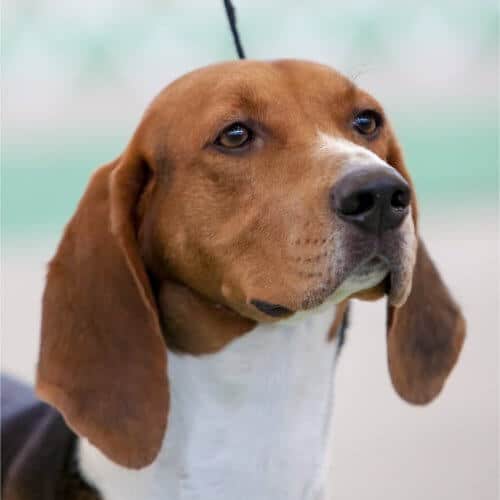
The tail of the Treeing Walker Coonhound is tapered and set moderately high, coming right off the topline. Its length is moderately long and is typically carried high in a saber-like fashion, forming a gentle curve. When the dog is excited or on the hunt, the tail may rise a bit higher, but it still maintains its shape without excessive curl. The hair on the tail is neither so thick as to form a flag or excessive brush nor too thin to create the appearance of a rat tail.
Adding a Treeing Walker Coonhound to the family can be a rewarding experience, but it’s important to consider several factors before bringing one home. These are high-energy hounds that require a lot of exercise and consistent training. Their need for activity demands daily outings, but their friendly nature can make them a great choice for active families. It’s important to note, however, that they are not ideal apartment dogs as they tend to use their voice a lot.
The Treeing Walker Coonhound is a typically healthy breed, although, like any dog, individuals can be at risk to some health concerns.
The average lifespan of the breed is 12 to 13 years, but with regular veterinary treatment, a nutritious diet, regular exercise, and good grooming, many can thrive beyond these years.
Although generally healthy, some Treeing Walker Coonhounds can be prone to certain health conditions, including:
The Treeing Walker Coonhound is a breed with a distinct and captivating personality. This hound is well-known for its hunting abilities, endless energy, and friendly attitude, making it a popular choice for both hard-driving hunters and human households.
This is an active breed that is always up for an adventure, whether it’s a long hike through the woods or a lively game of chase in the backyard. The Treeing Walker’s unlimited energy can be a blessing and a curse for some people, since it requires a commitment to providing regular exercise and mental stimulation. Their energetic personality, however, makes them ideal companions for busy people and families that enjoy outside activities.
In addition to the breed’s physical vigor, the Treeing Walker possesses a social and friendly nature. These coonhounds tend to be outgoing and welcoming, displaying an eagerness to engage with both people and other dogs. This sociable disposition can make them excellent family members, as they typically get along well with children and other household pets.
One of the breed’s more distinctive traits is its melodious voice. This rather charming characteristic can be both captivating and convenient as an alert system. However, the symphonic alarm can be problematic for neighbors who may not appreciate all the baying and barking.
The intelligence of the Treeing Walker Coonhound can be useful during training, but it should be remembered these hounds have a mind of their own. The breed’s unique combination of independence, energy, and endurance can make training sessions a satisfying challenge for those willing to put in the time and effort. To ensure success, training sessions should be kept short and focused on providing positive reinforcement.
Feeding and nutrition are essential considerations for maintaining a Treeing Walker Coonhound in optimal condition. To support this hound’s active lifestyle and bolster its energy levels, a balanced and nutritious diet is essential.
It is critical to choose a high-quality dog food that meets the breed’s specific nutritional needs. These coonhounds, being an energetic medium- to large-sized dog, benefit from a diet rich in the high-quality animal proteins that are necessary for the development and maintenance of muscles and their associated tissue.
Another important part of feeding a Treeing Walker is portion control. Because these dogs are prone to weight gain, strict portion management is required to maintain a healthy weight and avoid obesity.
When it comes to the portion size, this coonhound needs up to 3 cups of food daily. The best way to feed is to serve two to three meals per day, depending on a dog’s preferences and needs.
The Treeing Walker Coonhound’s food requirements will change as the dog ages. Puppies, adult dogs, and senior dogs all have different nutritional needs. As a result, selecting the appropriate meal for each life stage is critical for maintaining good overall health.
Training the Treeing Walker Coonhound can be a satisfying journey that requires patience, consistency, and a deep understanding of the breed’s unique wants and needs. These intelligent and energetic dogs have a strong hunting instinct, making them enthusiastic learners when properly guided.
While the spirited nature of these hounds can make training sessions exciting, it can also present challenges, particularly in the form of any perceived stubbornness. Positive reinforcement training is highly recommended to encourage the best results. These dogs thrive on rewards, praise, and encouragement, so offering treats, affection, and verbal praise can be powerful tools for fostering cooperation and reinforcing desired behaviors.
Another important aspect of successful training is consistency. As with any dog, it’s important to set clear boundaries and enforce them in ways that are positive and productive.
The importance of socializing a Treeing Walker cannot be overstated. Early exposure to a variety of people, animals, and environments will help these dogs develop into well-adjusted and confident adults. Early socialization can reduce the possibility of fearful or aggressive behaviors later in life.
Leash training is another vital aspect of training. Coonhounds are known for their keen sense of smell, which will sometimes lead them to follow scents and become unresponsive to any recall command.
Training the Treeing Walker Coonhound is more than just teaching commands and giving orders; it also establishes a strong and lasting relationship between the hound and its family, assuring a fun and fulfilling connection for many years to come.
Exercise is an essential aspect of caring for a Treeing Walker Coonhound, since the breed is widely known for its endless energy and drive. For these hounds, adequate exercise is not a luxury; it’s a necessity.
| Energy Level | High |
|---|---|
| Exercise Requirements | 2 Hours/Day (Minimum), Daily Walks, Vigorous Running, Regular Exercise, Occasional Swimming, Playing with Another Dog, Mental Stimulation |
The Treeing Walker Coonhound possesses a remarkable combination of agility, endurance, and strength. These hunting hounds can become bored and frustrated without regular exercise. This can lead to behavioral difficulties, including a tendency towards destructiveness. Exercising provides an outlet for the hound’s energy and it is recommended to provide these dogs with at least an hour of exercise per day.
The types of exercise suitable for Treeing Walkers are diverse, ranging from vigorous outdoor activities to mental challenges. Long walks, hikes, or runs are excellent ways to meet their physical exercise needs. Engaging them in activities like fetch or frisbee can also provide cardiovascular workouts while reinforcing the bond they share with family members.
These coonhounds are extremely bright and thrive on mental stimulation. Tracking, Agility, and Scent Work, for example, provide mental challenges that can minimize boredom while also encouraging focus and problem-solving skills.
Lastly, exercise is an essential part of care for a Treeing Walker Coonhound. Regular physical activity is critical to the hound’s mental and physical well-being. Boredom, dissatisfaction, and behavioral issues can result from a lack of exercise. This coonhound can release energy, stay engaged, and live a meaningful life by participating in various forms of physical and mental activity.
The Treeing Walker Coonhound has a short and smooth coat that is relatively low-maintenance, yet grooming is necessary to support the dog’s overall well-being and comfort.
| Coat Type | Smooth, Glossy, Short, Dense |
|---|---|
| Grooming Requirements | Weekly Brushing, Occasional Bathing, Routine Ear Cleaning, Periodic Nail Trimming, Regular Tooth Brushing |
The Treeing Walker Coonhound sheds, although it’s typically not excessive. Weekly brushing helps to remove loose hair, reducing the amount that’s left around the house. Regular brushing increases blood flow to the skin, which promotes skin health as well as a shiny coat.
These coonhounds don’t typically require frequent baths unless they’ve rolled in something that’s particularly dirty or smelly. Bathing too frequently, it should be noted, can strip the coat of its natural oils, leading to dry skin.
Another important aspect of grooming is cleaning and inspecting the ears. Likewise, overgrown nails can cause discomfort and even affect the hound’s gait. Regular nail trimming can prevent nail breakage and will help to keep feet and toes in good condition.
Living with a Treeing Walker Coonhound is a wonderful adventure, but it comes with certain considerations and responsibilities. When properly cared for, this courageous and courteous coonhound, recognized for its boundless energy, pleasant attitude, and powerful hunting instincts, can be a great hunting companion as well as a wonderful friend.
This coonhound is well-known for its friendly and outgoing nature, forming deep bonds with each member of the family. This breed thrives on social interaction and is usually good with children and other pets when properly introduced. The loyalty and affection offered by this hound are immeasurable, making the Treeing Walker a wonderful partner and loyal friend to those who understand its competitive spirit.
However, living with this breed involves specific responsibilities. To be happy, these hounds require a lot of activity and mental stimulation. A secure, fenced-in yard is essential for their safety and to keep them from following their nose into trouble. Leash training and an effective recall command are essential for keeping them under control during walks and during outdoor activities.
Another factor to consider is the Treeing Walker Coonhound’s vocal nature. This hound is well-known for its frequent use of its loud voice. This can be an issue in neighborhoods with noise regulations, so working on bark control and providing mental stimulation to avoid excessive vocalization is critical.
From an early age, Treeing Walker Coonhound puppies are playful and full of energy. Their curiosity, along with their natural desire to run and chase, can make them a bit of a challenge at times; but, if properly trained and socialized, these alert and active pups can become excellent companions.
The Treeing Walker Coonhound puppy typically possesses boundless energy and an affectionate nature. Due to its naturally competitive spirit (even at a young age), this pup needs to be monitored closely to keep it from getting into trouble. Providing proper care is also a priority. Regular veterinary check-ups and vaccinations are essential to ensure its well-being.
Crate training is a valuable tool during the early weeks and months of the puppy’s life. A cozy crate offers a secure and comfortable space for relaxing and it helps to facilitate housetraining in short order.
Socialization is another key aspect of puppy care, particularly for this breed. Exposing the coonhound puppy to various people, animals, and environments can help it to become a well-adjusted and confident adults.
Exercise is also essential for the Treeing Walker Coonhound puppy. The little one’s energy levels are high, requiring ample opportunities for physical activity. Regular play sessions and short walks are suitable, keeping in mind the pup’s growing body and the need for rest.
The Treeing Walker Coonhound is a highly energetic and athletic breed that can excel in various dog sports and activities that allow the hound to demonstrate its natural instincts and fine physical form with ease.
The Treeing Walker Coonhound is recognized by the world’s leading registries and kennel organizations, which categorize the breed into a specific Group based on its unique characteristics. This breed is recognized worldwide under the following Group designations:
| Organization | Group Designation |
|---|---|
| AKC (American Kennel Club) | Hound |
| UKC (United Kennel Club) | Scenthound |
| CKC (Canadian Kennel Club) | Not Recognized |
| ANKC (Australian National Kennel Council) | Not Recognized |
| RKC (The Royal Kennel Club) | Not Recognized |
| FCI (Fédération Cynologique Internationale) | Not Recognized |
The ideal Treeing Walker Coonhound is described by a Breed Standard that is approved by each of the world’s leading registries and kennel organizations. The Breed Standards for this breed may be found in the following links:
| Organization | Breed Standard |
|---|---|
| American Kennel Club | AKC Treeing Walker Coonhound Breed Standard |
| United Kennel Club | UKC Treeing Walker Coonhound Breed Standard |
| Canadian Kennel Club | Not Recognized |
| Australian National Kennel Council | Not Recognized |
| The Royal Kennel Club | Not Recognized |
| Fédération Cynologique Internationale | Not Recognized |
Treeing Walker Coonhound clubs are indispensable in preserving the breed’s heritage, upholding the Breed Standard, promoting responsible breeding practices, and fostering a community for enthusiasts and breeders alike. These organizations often serve as hubs for education, events, and advocacy for the breed.
Treeing Walker Breeders & Fanciers Association (TWBFA) operates in the United States and is dedicated to promoting the Treeing Walker Coonhound and educating the public about the breed.
Joining or engaging with these and similar clubs provides Treeing Walker Coonhound enthusiasts with a wealth of knowledge and opportunities to connect with others who share the same passion for this iconic American breed.
When purchased without previous knowledge of the breed’s unique characteristics, a Treeing Walker can end up in need of adoption or fostering.
In the US, Northeast Coonhound Rescue is one of the most supportive rescue organizations. The group’s volunteers are dedicated to rescuing, rehabilitating, and finding new homes for an Treeing Walker that find itself in a vulnerable position. The organization not only provides relief for hounds in distress, it also offers potential adopters an avenue to join a community of people who share a love for the breed.
Treeing Walker Coonhounds are generally not aggressive, particularly towards humans. They tend to be friendly, outgoing, and sociable. However, due to their hunting instincts, they might show excessive interest towards smaller animals, so proper training and socialization are essential from a young age.
These Coonhounds can have a strong protective instinct, especially when it comes to their family and property. They are known to be alert and vigilant, making them excellent watchdogs. Despite their protective nature, they are typically not aggressive and should be socialized to make sure they can distinguish between normal and threatening situations.
While individual preferences can vary, many Treeing Walkers enjoy swimming. The breed’s strong and athletic build makes them naturals in the water. However, like all breeds, they should be introduced to water gradually and monitored to make sure they are comfortable and safe while swimming.
Treeing Walker Coonhounds usually reach their full adult size by the time they are 1 to 1.5 years old. However, some individuals may continue to fill out and gain muscle until they are around 2 years old. Providing a balanced diet and regular exercise during the growth period is crucial for every hound’s development.
Yes, Treeing Walker Coonhounds are known to be very affectionate, especially with their family. They enjoy being involved in family activities and are known for their loyal nature. However, they can be reserved around strangers, so socialization is important to help them become well-adjusted as adults.
Treeing Walkers can make excellent family pets for active households. They are energetic, playful, and get along well with children. However, due to their hunting instincts, they may be better suited to families with older children who understand how to interact safely with larger dogs.
No, these Coonhounds are not considered hypoallergenic. They shed moderately and produce dander, which can trigger allergies in sensitive individuals. Potential owners with allergies should spend time around the breed before deciding to bring one into their home.
Yes, Treeing Walker Coonhounds are intelligent dogs. They were bred for hunting, requiring them to think independently and solve problems quickly. Their intelligence makes them responsive to training, but they also benefit from mental stimulation to prevent boredom.
Treeing Walkers are known to be vocal dogs, using their bark to communicate while hunting and to alert their owners to anything unusual. They can bark a lot, especially if they are bored or not getting enough exercise. Training and sufficient mental and physical stimulation can help to manage their vocalizations.
No, these Coonhounds do not have webbed feet. They have strong, compact feet that are well-suited for their active lifestyle. While they do not have the webbing that some water-loving breeds have, many still enjoy water sports and are capable swimmers.
Yes, Treeing Walker Coonhounds do shed. They have a short, dense coat that sheds year-round, with increased shedding during the change of seasons. Regular grooming can help to manage shedding and will keep this hound’s coat in good condition.

Read and learn about the various coonhound performance events, such as Nite Hunts, Bench Shows, Field Trials, and Water Races.
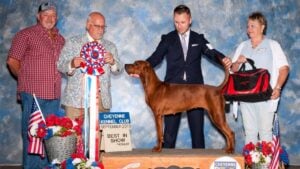
Discover the journey of Cole Vanover of Lost Heritage Hounds, blending coonhunting passion with top-winning Treeing Walkers.
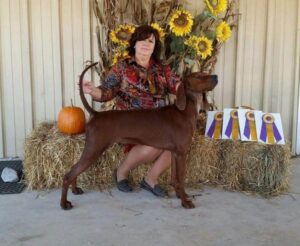
Interview with Hound Group Breeder Lori Mills – My kennel name is Sidearm Kennel. We keep between 40 and 80 dogs, including puppies.
The best way to ensure a long and happy relationship with a purebred dog is to purchase one from a responsible breeder. Not sure where to begin?
Contact the National Parent Club’s Breeder Referral Program, which is listed on the AKC Breeder Referral Contacts page.
